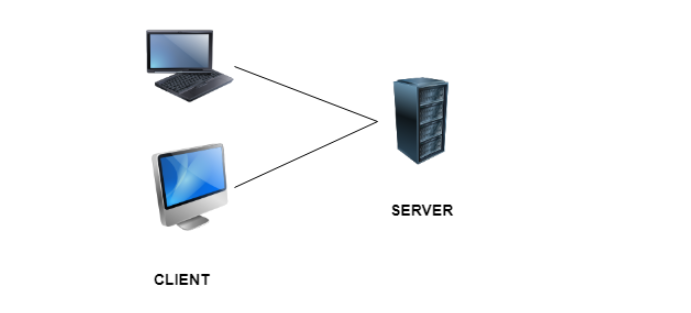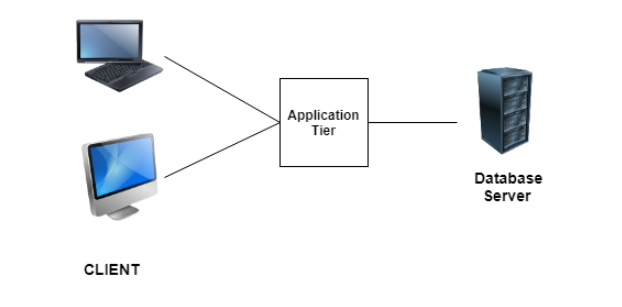
 Data Structure
Data Structure Networking
Networking RDBMS
RDBMS Operating System
Operating System Java
Java MS Excel
MS Excel iOS
iOS HTML
HTML CSS
CSS Android
Android Python
Python C Programming
C Programming C++
C++ C#
C# MongoDB
MongoDB MySQL
MySQL Javascript
Javascript PHP
PHP
- Selected Reading
- UPSC IAS Exams Notes
- Developer's Best Practices
- Questions and Answers
- Effective Resume Writing
- HR Interview Questions
- Computer Glossary
- Who is Who
Structure of a Client Server System
In client server computing, the clients requests a resource and the server provides that resource. A server may serve multiple clients at the same time while a client is in contact with only one server.
The different structures for two tier and three tier are given as follows −
Two - Tier Client/Server Structure
The two tier architecture primarily has two parts, a client tier and a server tier.The client tier sends a request to the server tier and the server tier responds with the desired information.
An example of a two tier client/server structure is a web server. It returns the required web pages to the clients that requested them.
An illustration of the two-tier client/server structure is as follows −
Advantages of Two - Tier Client/Server Structure
Some of the advantages of the two-tier client/server structure are −
- This structure is quite easy to maintain and modify.
- The communication between the client and server in the form of request response messages is quite fast.
Disadvantages of Two - Tier Client/Server Structure
A major disadvantage of the two-tier client/server structure is −
- If the client nodes are increased beyond capacity in the structure, then the server is not able to handle the request overflow and performance of the system degrades.
Three - Tier Client/Server Structure
The three tier architecture has three layers namely client, application and data layer. The client layer is the one that requests the information. In this case it could be the GUI, web interface etc. The application layer acts as an interface between the client and data layer. It helps in communication and also provides security. The data layer is the one that actually contains the required data.
An illustration of the three-tier client/server structure is as follows −
Advantages of Three - Tier Client/Server Structure
Some of the advantages of the three-tier client/server structure are −
- The three tier structure provides much better service and fast performance.
- The structure can be scaled according to requirements without any problem.
- Data security is much improved in the three tier structure.
Disadvantages of Three - Tier Client/Server Structure
A major disadvantage of the three-tier client/server structure is −
- Three - tier client/server structure is quite complex due to advanced features.



